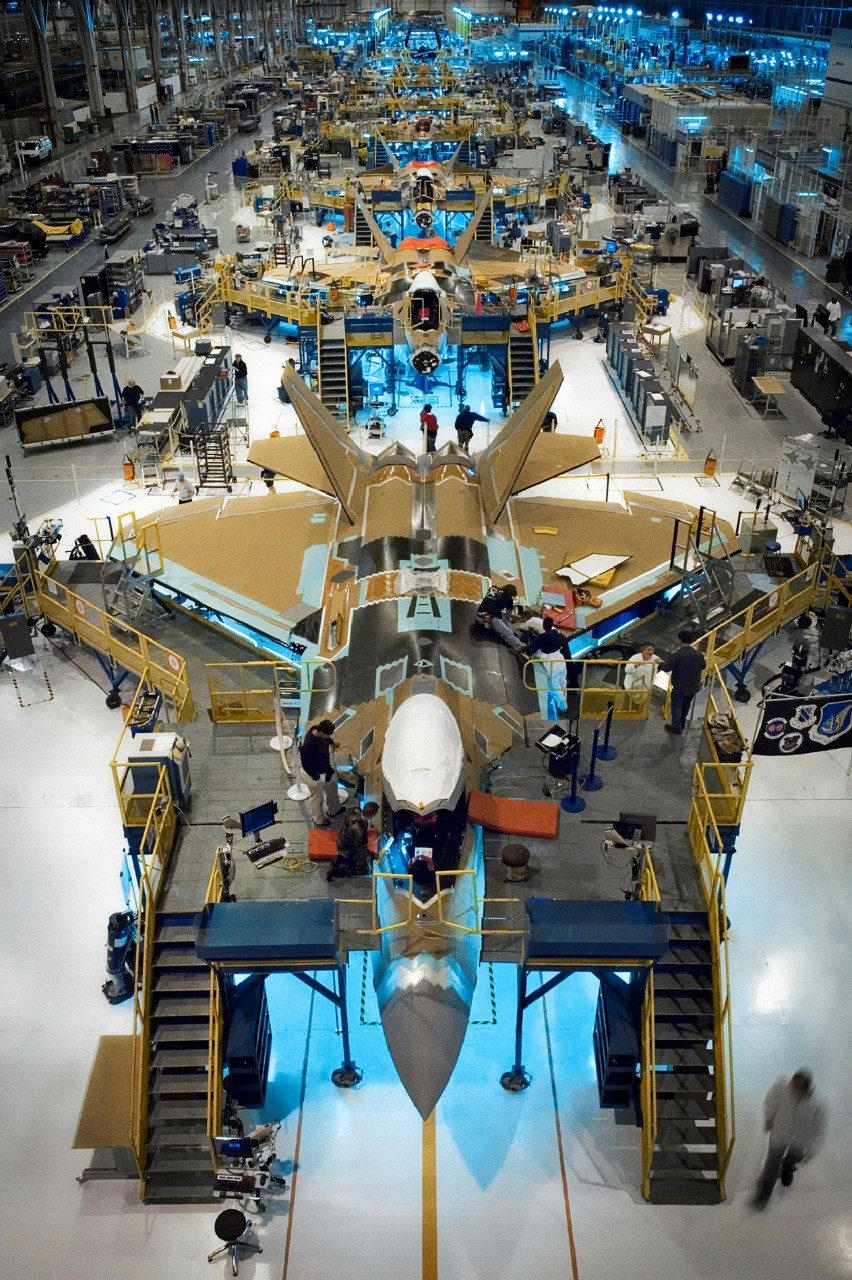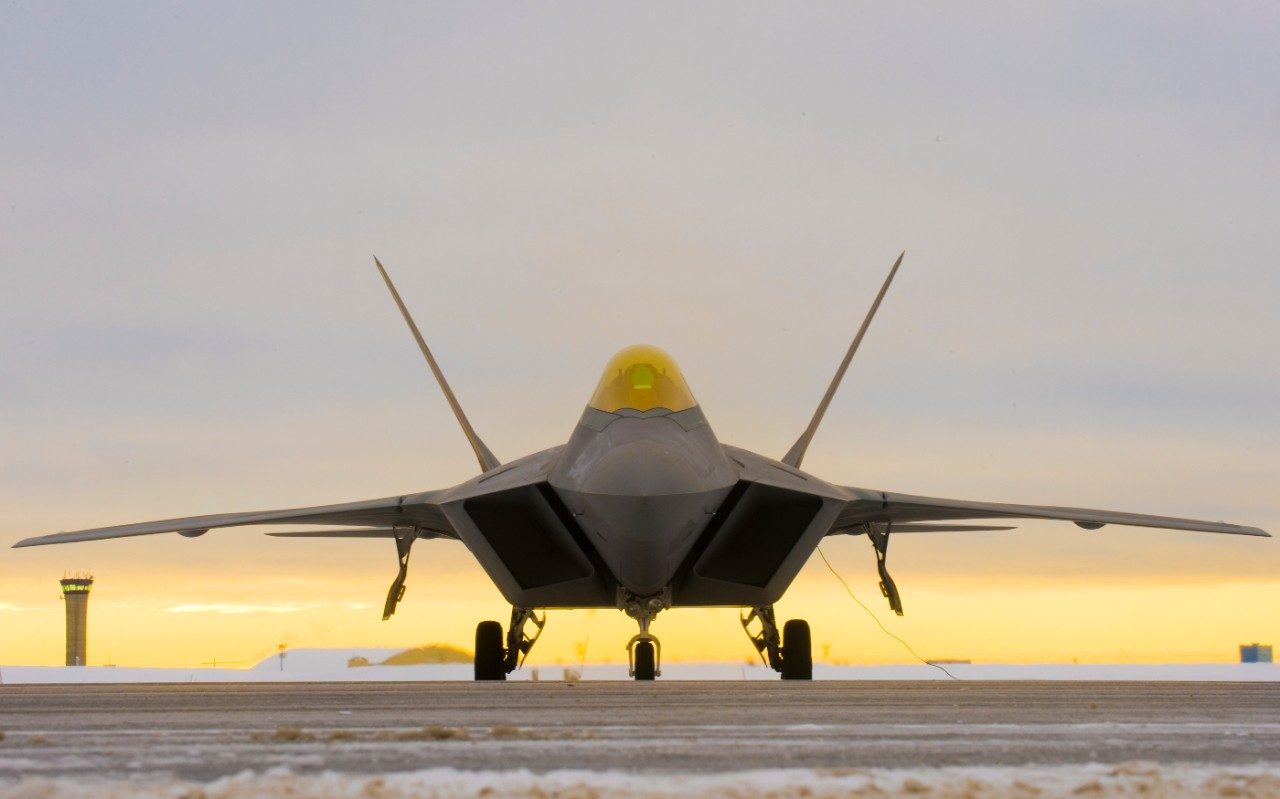Cheers went up from the several hundred engineers, designers, team members, mechanics and Air Force officials watching from the ramp—plus the 5,000 or so interested people looking on from behind the fence at the end of the runway—as Raptor 4001, the first F-22 air dominance fighter, took to the skies for the first time on September 7, 1997.
Vinny Devino, who had led the effort to refine the design of the Raptor from the prototype YF-22 to the production F-22A, said what many people were thinking: “The F-22 is flying. Everything else is now a target.” The first flight was the dawn of a completely new generation of fighter aircraft—one that is stealthy, maneuverable and lethal.

A long road led to that Sunday morning flight in 1997. The US Air Force identified a requirement in 1981 for a new air superiority fighter to replace the F-15—which then had been in service for just seven years. The competitors in the Advanced Tactical Fighter competition were selected on Halloween in 1987. The YF-22 and YF-23 prototypes were flown in 1990, and the Lockheed-Boeing-General Dynamics team won the ATF contest in 1991.
After nearly 44,000 wind tunnel test hours, 13,000 material sample tests, six years of development and a trio of program rephasings mandated by Congress, the F-22 was finally airborne.
Wearing his lucky Super Chicken T-shirt under his flight suit, chief test pilot Paul Metz pulled the Raptor’s nose up and quickly gained speed and altitude, even with the landing gear down. Jon Beesley, flying the safety chase aircraft, put his F-16 in afterburner to keep up with the Raptor.
After two circuits on a triangular route around north Georgia, Metz touched down fifty-eight minutes later. As he rolled up the taxiway, he turned the jet slightly, tapped the brakes and the jet bowed to the appreciative crowd. The maiden flight was the first of 3,496 flights and 7,616 test hours to come in the F-22’s engineering and manufacturing development phase. The Air Force would declare the F-22 operational in 2005.
“The very existence of this airplane—your airplane—has altered the strategic landscape forever,” said Lockheed Martin CEO Robert J. Stevens. The date was May 2, 2012, and the occasion was the delivery of an F-22 Raptor to the U.S. Air Force. There was special significance attached to this aircraft. It was the last of 195 F-22s that Lockheed Martin had produced for the Air Force during the previous 15 years, and it represented the completion of the world’s only operational fifth generation stealth fighter fleet.

The single-seat, twin-engine fighter features a combination of capabilities that are nothing less than revolutionary. It can soar 10 miles high and fly at supersonic speeds for extended periods of time thanks to an unprecedented capability known as “supercruise,” which propels the jet to speeds greater than Mach 1.5 without the use of afterburners.
It can accelerate quickly and execute razor-sharp turns—even at high speeds. It carries weapons primarily for striking airborne targets, but the Raptor pilot can also attack ground targets from standoff ranges. . And it is equipped with stealth technology that enables it to operate virtually undetected by radar.
Assigned to seven U.S. Air Force bases, the F-22 fleet is ready to be rapidly deployed anywhere in the world it is needed. The Air Force has described the F-22 as “unmatched by any known or projected fighter.” The National Aeronautic Association awarded Lockheed Martin the 2006 Collier Trophy, American aviation’s most prestigious award, for “designing, testing and operating the revolutionary F-22 Raptor, providing total air dominance for America’s future.”
Sources and Additional Reading
- Lockheed Martin. “F-22 Raptor: Air Dominance Delivered.” Brochure.
- Lockheed Martin. “F-22 Raptor.” www.lockheedmartin.com/us/products/f22.html, accessed May 17, 2012.
- Lockheed Martin. “Lockheed Martin Delivers Final, Historic F-22 Raptor to U.S. Air Force.”http://www.lockheedmartin.com/us/news/press-releases/2012/may/120502ae_final-f-22-delivered.html, accessed May 17, 2012.




